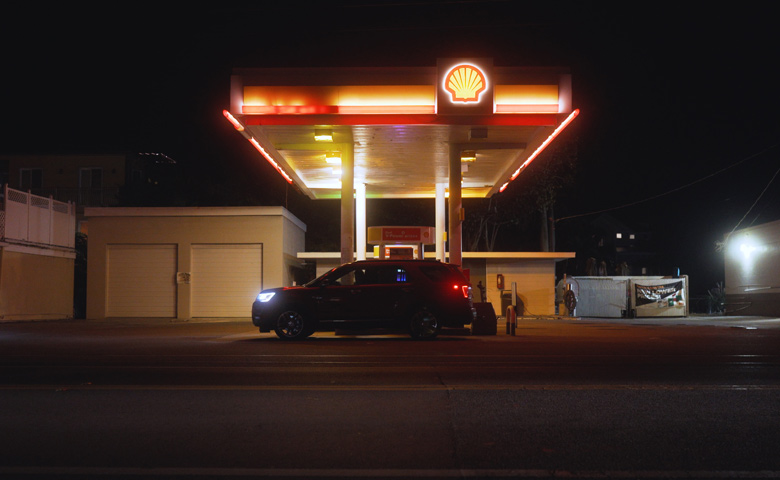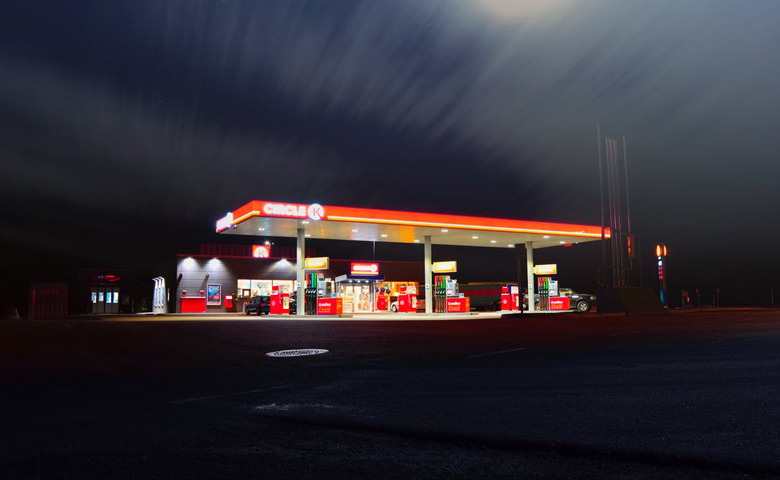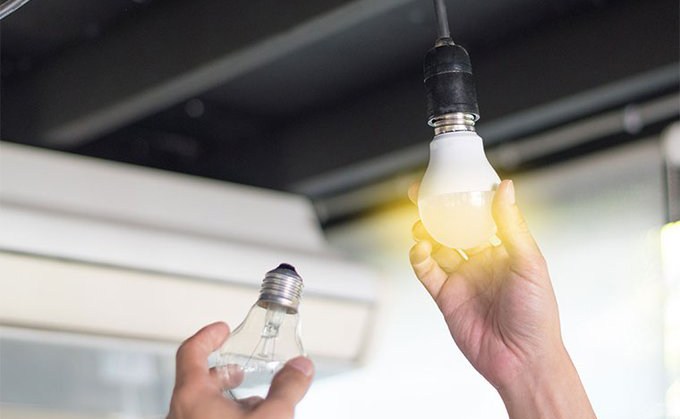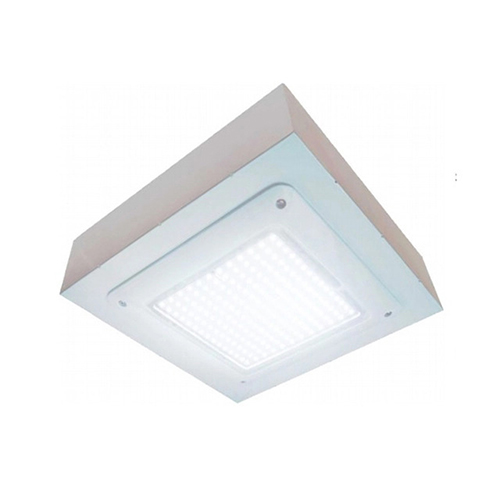How to Choose Canopy Lights for Gas Station Lighting
“Brighter is better” has been the philosophy behind gas station lighting here in the US for many years. Now, with modern lighting technology and sophisticated client needs, factors such as quality of illumination, lifetime cost, and energy usage take center stage when choosing canopy lights for gas station lighting.
The proprietors of modern gas stations have now realized that good quality lighting is crucial for safety, cost savings, and attracting more drivers to their facilities. General and electrical contractors are faced with quite a challenge when helping clients choose the best options.
There are three main types of canopy lights you can choose for your gas station:
- LED canopy lights. These can be further categorized into surface mount, recessed mount, and vertical LED lights.
- High-Intensity Discharge (HID) lamps. These are gas-discharge lamps including metal halide, high-pressure sodium lights, and mercury vapor lights.
- Fluorescent and compact fluorescent (CFL) fixtures.
LED canopy lights are by far the best option for gas station lighting. Their energy savings, quality of illumination, and cost savings far outweigh their higher initial cost.
But HID lamps, such as halogen bulbs, are more reliable and produce more light. Since the choice isn’t straightforward, let this guide help you understand the different types of canopy lights for gas stations and what lighting design factors will influence your choice.
Table of Contents
- What Is a Canopy Light?
- LED vs HID vs CFL Canopy Lights
- Factor 1 - People-Centered Lighting Design
- Factor 2 - Energy Efficiency and Cost Savings
- Factor 3 - Principles of Functional Lighting
- Unbeatable Deals on Gas Station Canopy Lights Supply
- Frequently Asked Questions
What Is a Canopy Light?
In lighting, a canopy is a metal plate that covers the junction box in a wall, ceiling, or soffit. Any surface mount or recessed lighting that uses a canopy qualifies as a canopy light.
In gas station lighting, a canopy light is any kind of fixture that is installed directly onto the station canopy. It’s important that these fixtures be weatherproof because the junction box and other components are installed on the top of the canopy.
The image below is a good example of a 2’ by 2’ “shoebox” surface mount canopy light.
The space inside the box is sufficient enough to house LED drivers and other electrical components; recessed mount fixtures will have these located above the canopy.
Apart from canopy lights, gas stations also use other types of lighting fixtures including wall packs for the sides of buildings, flood lights for parking lots, and post lights for entrances and walkways.
The best way to choose the perfect canopy lights for your gas station is to decide what lighting technology you want, and then pick the canopy lights that best suit your aesthetic, functionality, and price goals.
To start, we will list the main features, pros, and cons of the three most common types of commercial lighting technology.
LED vs HID vs CFL Canopy Lights
For our purposes, we won’t be discussing incandescent lighting. Incandescents rely on a white-hot element to produce light, wasting over 90% of their energy as heat. That’s why they’re now considered outdated, though they haven’t been completely phased out.
The most common types of lights used in commercial canopies today are LEDs, HIDs, and CFLs. Each variety has unique advantages and disadvantages that will suit different applications.
Pros and Cons of Different Gas Station Canopy Lights
The table below summarizes the advantages and disadvantages of the four most common gas station canopy lights.
| Type of Lighting | Pros | Cons |
| LED Lighting |
|
|
| HID Lighting |
|
|
| CFL and Fluorescent Lighting |
|
|
| Induction Lighting |
|
|
Induction lights are a more advanced type of fluorescent light that relies on strong electromagnets instead of heated elements to excite the gas in the tube.
Induction lights have remarkably similar properties to LED lights: a rated lifetime of 100,000 hours, up to 90 lumens per watt (LEDs produce 120 lumens per watt), no flickering, no glare, dimmability, and 70 to 90 CFI.
However, these lights are expensive and are used where extremely high luminous flux is required. This is because induction lights can produce 36,000 lumens in a single package or better, whereas LEDs currently manage 15,000 lumens for a 250 W package.
Even though the capabilities of each type of canopy light are clear, there are three more important factors to consider when choosing canopy lights for a gas station.
Factor 1 - People-Centered Lighting Design
Lighting parameters, such as illuminance, light color, brightness distribution, and color rendering, are crucial to gas station lighting and affect everything from revenue to safety.
Firstly, people-centered lighting is important because of the psychology of drivers. As early as 2001, an academic study suggested that better lighting influences the tendency of drivers to pull into a gas station.
Glare-free lighting with a whiter (cooler) temperature provides a psychological sense of safety and relaxation. Compare the two familiar scenes below and consider which one you are likely to pull into.


As the two images above show, the well-lit gas station with bright white lights looks safer and more inviting, so you are more likely to pull into it when driving by.
The technical factors that come into play here include:
- Illuminance: This is the distribution of light per unit area. Both vertical and horizontal surfaces need specific amounts of light to ensure safe operation in a gas station.
- Light distribution is important to control glare and eliminate dark spots.
- Many cities have lighting regulations for gas stations and other public and commercial areas. In this example, the code calls for a minimum illumination of 1 footcandle and a maximum of 5.5 footcandles.
- Utility: For example, convenience stores in a gas station will tend to have softer lighting while the area around the pumps will have the highest illumination.
- Branding preferences can play a role in your choice of lights.
Factor 2 - Energy Efficiency and Cost Savings
From an economic view, the lighting fixtures with the lowest lifetime cost will be the best option. Lifetime cost includes the initial cost of purchase, maintenance, and energy costs associated with the light fixtures.
Philips estimates that lighting accounts for more than 30% of the electricity costs in a gas station. Any cost cuts in this area can result in thousands of dollars saved every year.

Energy-efficient lights are also eco-friendly. Because they use much less electricity, they help to reduce a station’s carbon footprint.
When it comes to maintenance, fluorescent and HID lamps require scheduled service checks. Many companies choose to replace these at 75% of their rated service life to ensure the best performance, with regular checks performed on ballasts, tubes, and other components.
LED canopy lights, on the other hand, require almost no maintenance throughout their lifetime. This makes for significant lifetime cost savings, especially considering that they typically last four times longer than HIDs and CFLs.
As a prudent businessperson, you can advise gas station owners and managers that the initial cost of gas station canopy lights isn’t as important as the total lifetime cost. This is also why LED lighting is the best choice for industrial applications.
Factor 3 - Principles of Functional Lighting
Like many other commercial and industrial facilities, gas stations rely on partition lighting with cost savings and functionality in mind.
As a whole, a gas station consists of several different areas including the work area, work-adjacent areas, parking, walkways, car wash/garage, and convenience stores.
Each of these will have varying light levels in the interest of illumination and cost savings. In general, the working areas and outdoor lighting will be the brightest.
In the work area, contrast and a clear field of view are paramount. Given the sensitivity of gas stations to safety, it is essential that employees and drivers have maximum visibility in the fueling and refueling areas.
The convenience store, on the other hand, requires a warmer, more inviting type of light. This gives a welcoming atmosphere to customers and encourages them to linger and make additional purchases.

Technology is important when it comes to functional lighting. Fluorescents are known for their poor light distribution, having a bright white spot directly beneath them that gets darker as you move away.
HIDs have bright and uniform light, but they have a harsh orange glare. LED canopy lights have a uniform and comfortable light—in particular, 3D LEDs illuminate both vertical spaces and horizontal spaces, providing the best light levels overall.
Unbeatable Deals on Gas Station Canopy Lights Supply
As a general or electrical contractor, you’re obliged to advise clients on the best gas station canopy lights to suit their needs. While tried-and-tested technology like HIDs continue to rule in commercial lighting, new LEDs offer more benefits to clients and contractors alike.
You can make even more money by selling lighting design services and additional products such as dimmers, wireless controls, and more. The Electrical Contractor magazine says,
“Electrical contractors (ECs) must become familiar with available technology and products. As ECs help builders and homeowners decide what to install, understanding the total cost of lighting fixtures will be crucial.” Electrical Contractor Magazine
If you need help with lighting design or value-engineered quotes to get your project within your budget, talk to our experts. We are happy to offer consultative services to contractors and facility managers to help them exceed their lighting expectations.
What’s more, you’ll learn about what rebates and incentives we’re currently offering to help you get your project off the ground. So call us now at 888-548-6387.
Frequently Asked Questions
What type of lights do gas stations use?
Gas stations use canopy lights designed for outdoor use. The best options work with modern lighting technology such as High Intensity Discharge (HID) or Light Emitting Diodes (LEDs). LED canopy lights are the best option for gas station use because of their energy savings and incredible performance.
What are canopy lights?
The word “canopy light” can be used to describe both indoor and outdoor lighting fixtures that feature a box or backplate cover. In a gas station, canopy lights are mounted on the gas station’s canopy structure. These fixtures are specially designed to be weatherproof and have special lighting properties.
How do you light a gas station?
Gas station lighting is a complex challenge. In addition to the obvious safety issues, you also need lighting that appeals to drivers to help drum up revenue for clients. Many clients today also want modern energy-saving solutions, so it is important to consult lighting design experts to come up with a practical and satisfactory design plan.










